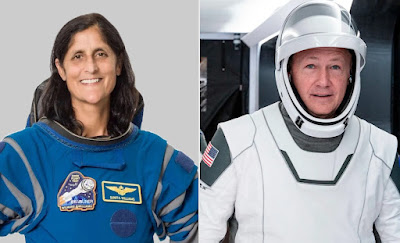THE world has changed – or perhaps it is more accurate to say it is constantly changing. Nowhere is this more evident than in the realm of space exploration. As we venture further into 2025, the global landscape continues to shift, reshaping the ambitions and dynamics of the space industry in unexpected ways.
Geopolitics has always played a role in space, but recent developments have heightened its influence. Alliances are being rewritten, national priorities realigned and commercial players are navigating a complex and often turbulent environment.
The repercussions of these tectonic shifts are still unfolding, and the impact on the future of space exploration remains an open question. Will we see a new era of international cooperation, or will space become the next great theatre of geopolitical rivalry? Perhaps, as history suggests, both will coexist in an uneasy balance.
Against this backdrop, ROOM Space Journal remains committed to exploring the ideas and innovations shaping our shared future beyond Earth. In this issue, we take a provocative look ahead, challenging assumptions and pushing the boundaries of imagination.
Our cover image – a pregnant woman in space – is deliberately symbolic, designed to spark discussion rather than declare an imminent reality. Yet, as our lead articles demonstrate, the concept of human reproduction in space, whilst facing many challenges, is not a mere flight of fancy.
It is a serious topic, actively being researched and debated by visionaries, including Asgardia the space nation, whose mission statement includes facilitating the birth of the first human beyond Earth’s gravity. While such an event may still be years – if not decades – away, the implications are profound and demand our attention today.
Meanwhile, back on Earth, we are reminded that space is not just about human aspirations but also about the very real challenges that come with our increasing dependence on satellites and space-related infrastructure.
As we look to the future, agility and specialisation may well define success more than sheer size. One of the more underappreciated yet potentially devastating threats to modern civilisation is the impact of severe space weather, a subject I explore in ‘Life in the Sun’s atmosphere’. Solar storms have the potential to cripple global communication networks, disrupt power grids, and send shock waves through financial markets. How prepared are we? The answers may be unsettling.
On the commercial front, the space industry continues to expand, but not necessarily in ways we might have predicted. The business of space is no longer the exclusive domain of traditional aerospace giants and new players are emerging, seizing opportunities once thought beyond their reach.
Whilst attending the International Astronautical Congress (IAC) in Milan last October, I was interested to learn how South Korea’s INNOSPACE is carving out a niche in the small rocket market, and discuss with Bruno Carvalho how Portugal is positioning the Azores as a hub for orbital launches.
At the same time, industries far removed from space exploration are finding unexpected synergies. Sabelt, for example, a company best known for its expertise in high-performance racing harnesses, now applies its technology to astronaut safety systems. These cross-sector collaborations highlight how space is no longer a standalone industry but an integral part of a much larger technological ecosystem.
Yet, for all this expansion, a sense of saturation is creeping in. With space conferences and networking events proliferating at an almost unsustainable rate, one has to wonder whether the industry is spreading itself too thin. Increasingly, the most impactful gatherings are the smaller, more focused forums where real conversations happen, deals are struck and innovation thrives. It is a reminder that in an industry often obsessed with scale, sometimes less is more.
There is an old adage about the advantages of being a big fish in a small pond rather than a small fish in a vast ocean. Progressively, the space sector is proving this point. As we look to the future, agility and specialisation may well define success more than sheer size. Those who can adapt, pivot and carve out their own corner of the cosmos will be the ones who endure and thrive.
# #
Editor's note: this post is an edited version of my Foreword ‘Shaping space through innovation, geopolitics and the future’ for the Spring 2025 issue of ROOM Space Journal.






